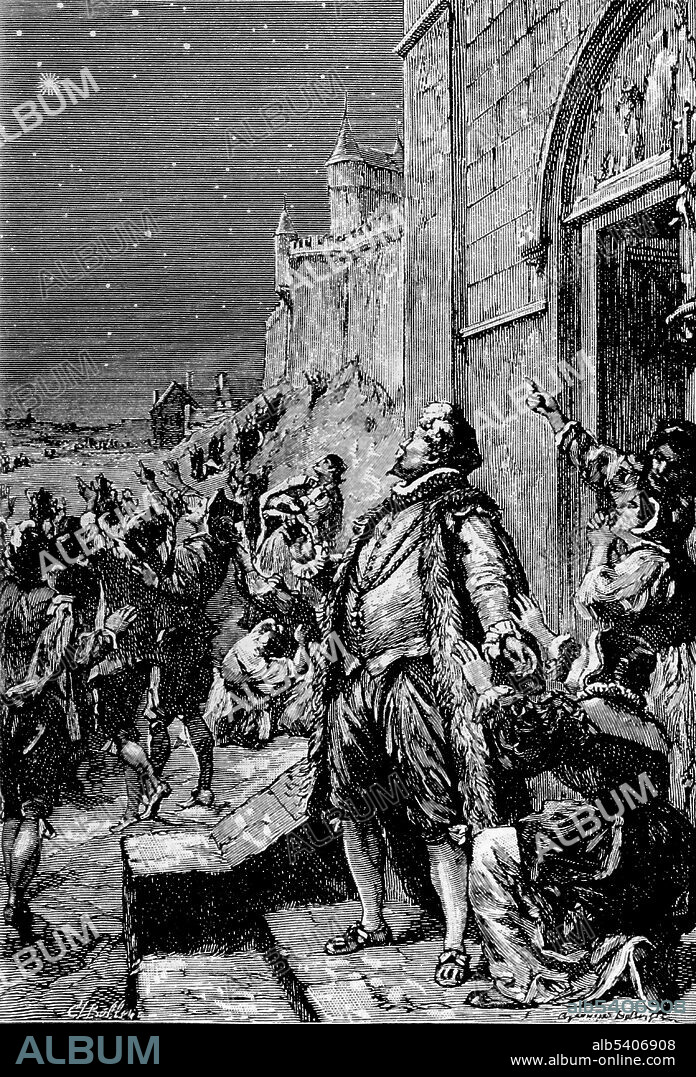alb5406908
Tycho Brahe Observing Supernova, 1572

|
Add to another lightbox |
|
Add to another lightbox |



Buy this image.
Select the use:

Title:
Tycho Brahe Observing Supernova, 1572
Caption:
Brahe observing the new star (supernova) in the Cassiopeia constellation (upper left corner). It appeared in the Historical book Astronomie Populaire by Camille Flammarion (Paris, 1884). The supernova of 1572 is often called Tycho's supernova, because of his extensive work De nova et nullius aevi memoria prius visa stella (Concerning the Star, new and never before seen in the life or memory of anyone, published in 1573), a work containing both his own observations and the analysis of sightings from many other observers. Tycho Brahe (December 14, 1546, October 24, 1601) was a Danish astronomer and alchemist. He was the last of the major naked eye astronomers, working without telescopes for his observations. Tycho is credited with the most accurate astronomical observations of his time, and the data was used by his assistant, Johannes Kepler, to derive the laws of planetary motion. Due to a dueling injury at university, he always wore a metal nose prosthetic.
Credit:
Album / Science Source
Releases:
Image size:
3058 x 4500 px | 39.4 MB
Print size:
25.9 x 38.1 cm | 10.2 x 15.0 in (300 dpi)
Keywords:
1500S • 1546 • 1570S • 1572 • 16 16TH XVI XVITH SIXTEENTH CENTURY • 16 CENTURY • 1601 • 16TH CENTURY • 16TH • ARTWORK • ASTRONOMER • B • BRAHE • BW • CAS • CASSIOPEIAE • CELEBRITIES • CELEBRITY • CENTURY • DANISH • DRAWING • EYE • EYEBALLS • EYES • FAMOUS PEOPLE • FAMOUS • HISTORIC • HISTORICAL • HISTORY • ILLUSTRATION • ILLUSTRATIONS • IMPORTANT • INFLUENTIAL • MAN • MEN • NAKED • NOTABLE • NOVA • NUDE • OTTESEN • PERSONALITIES • PERSONALITY • SIXTEENTH • SN • SUPERNOVA • TYCHO'S • TYCHO • TYGE • WELL-KNOWN • XVI CENTURY
 Pinterest
Pinterest Twitter
Twitter Facebook
Facebook Copy link
Copy link Email
Email
